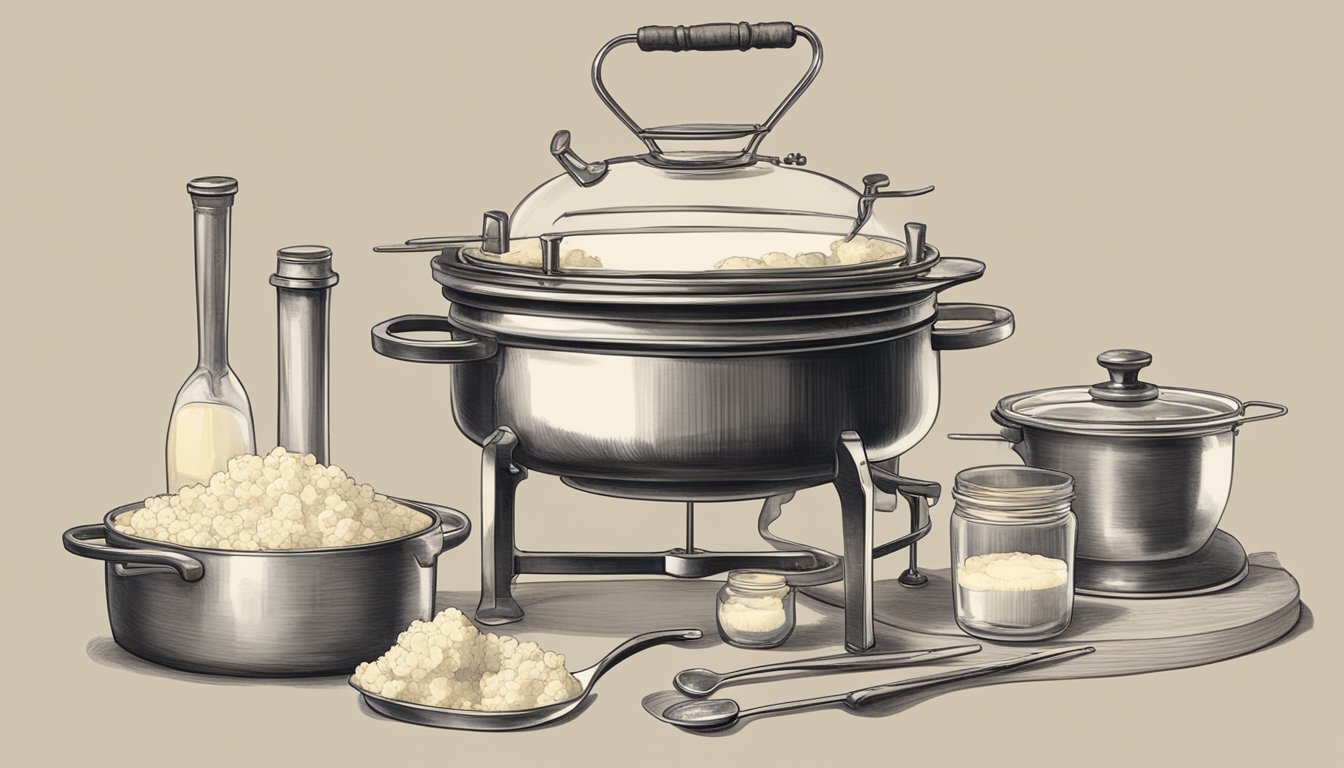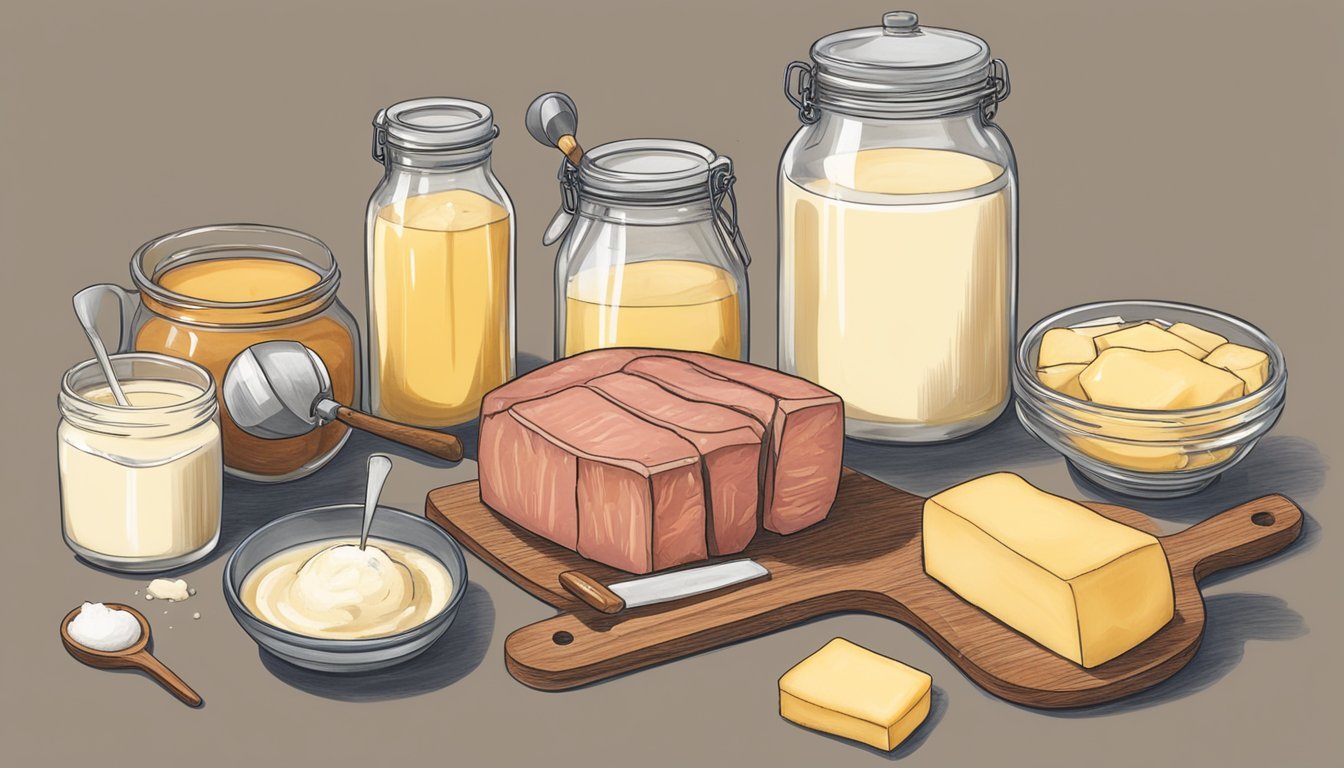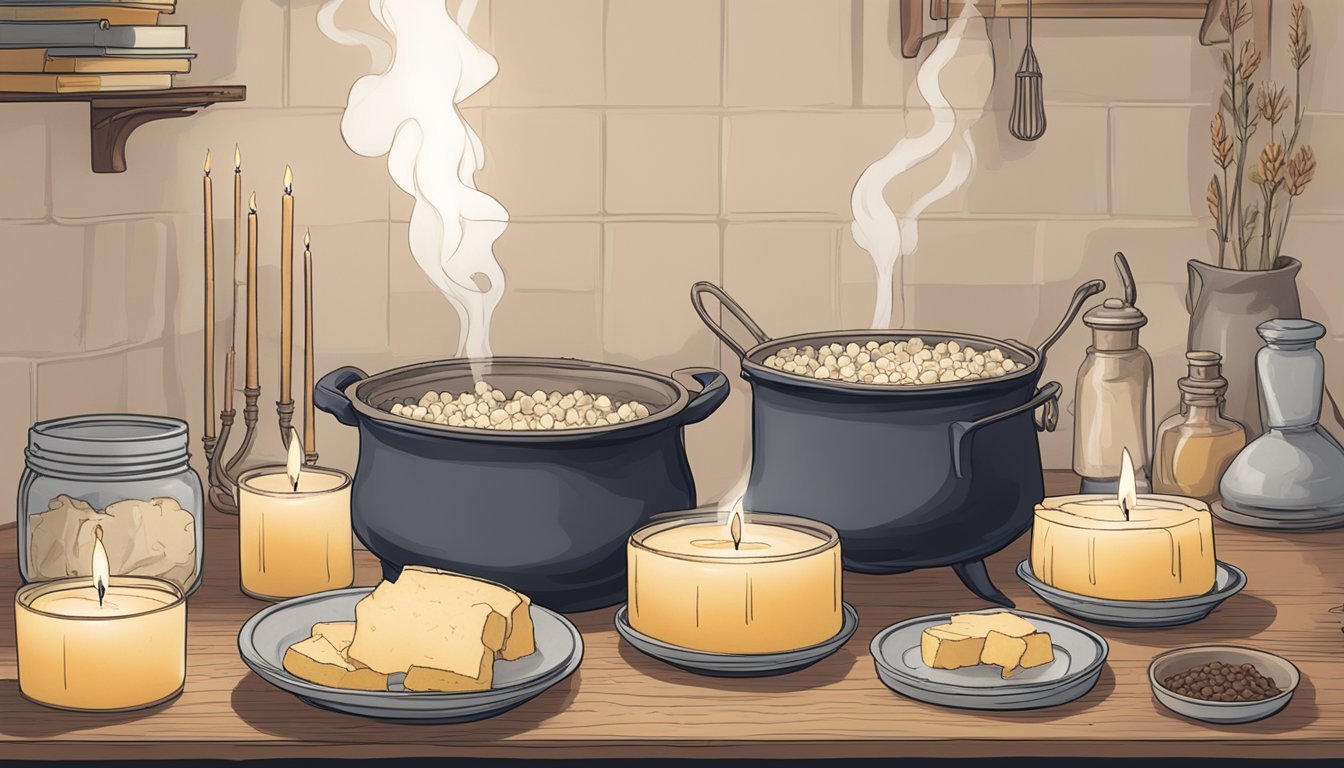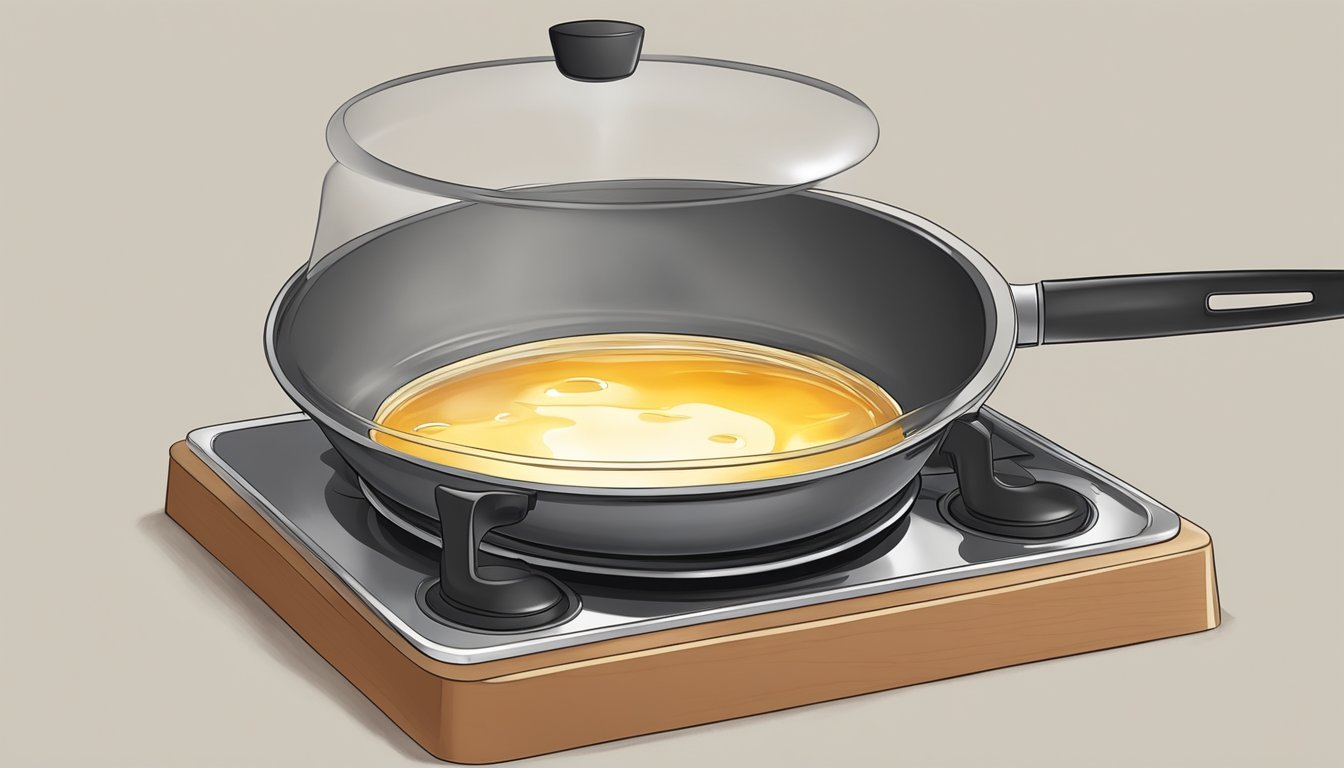The Ultimate Guide to Making Beef Tallow Candles for Emergencies,,
A Practical DIY Approach
Making candles from beef (What wine goes well with beef?) tallow is an age-old tradition that serves practical purposes even in the modern world. These candles are particularly useful in emergency situations, offering a reliable source of heat and light that is easy to produce with minimal resources. Beef tallow, rendered from beef fat, is readily available and can be converted into long-lasting candles without the need for specialized equipment.
The process of crafting tallow candles involves melting the tallow and preparing wicks, which are then dipped or set into the cooling fat to create a stable and slow-burning candle. This method of candle making not only recycles a byproduct of the beef industry but also provides an economical solution for emergency preparedness. Tallow candles burn with less smoke and a brighter flame compared to other fats, making them a superior choice for lighting in situations where other sources of light may not be available.
In addition to their functionality, tallow candles can be customized with essential oils for added fragrance, enhancing the ambiance while still maintaining their utility. Whether for routine blackouts or more severe emergencies, tallow candles can be a crucial component of any household's preparedness kit, showcasing a harmonious blend of traditional practices with modern emergency planning.
Understanding Tallow
When discussing tallow, it is crucial to understand its origins, its benefits when using specifically from beef, and its status as a sustainable, eco-friendly resource.
Origins of Tallow
Tallow is essentially rendered animal fat, traditionally sourced from sheep or cattle. Beef tallow, derived from the fat of cows, is obtained by heating the trimmings of the cow's fat, which allows separation from the meat and connective tissue. Historically, it has been an immensely valuable resource, utilized in cooking, soap making, and as a lubricant.
Benefits of Using Beef Tallow
Utilizing beef tallow for candle making has several advantages. First, it burns clean without producing many of the toxic by-products associated with other waxes. Second, it is naturally dripless, giving it an edge over other animal fats. Lastly, in emergency situations, tallow candles offer both light and warmth, serving multiple purposes.
Cleaner burn: Minimal harmful emissions
Dripless: Reduced mess during burning
Multi-purpose: Provides light and warmth
Sustainable and Eco-Friendly
Beef tallow is a by-product of the meat industry, making it a resourceful use of materials that would otherwise go to waste. In terms of sustainability, using tallow aligns with eco-friendly practices as it biodegrades readily, reducing environmental impact. Furthermore, when sourced responsibly, it supports the ideology of whole-animal utilization, which is more sustainable than discarding unused parts.
Resourcefulness: Zero-waste approach, uses by-products
Biodegradable: Lowers environmental footprint
Whole-animal utilization: Promotes sustainability in meat production
Tallow's role extends beyond being just another wax substitute; its application in emergency lighting makes it a prudent choice for eco-conscious individuals seeking reliable and multipurpose resources.
Essential Materials and Tools
When preparing to craft beef tallow candles for emergencies, selecting the right materials and tools is crucial. These ensure the final product burns effectively and safely.
Types of Wicks
One should choose wicks wisely, as they are central to candle performance. Cotton wicks are commonly recommended for tallow candles; they should be sized appropriately for the candle’s diameter to ensure a clean burn. It's also possible to prime wicks by soaking them in melted tallow before using, which can enhance their burning properties.
Choosing the Right Containers
The container is another vital aspect of candle making. Mason jars or canning jars are preferred for their heat resistance and wide availability. It’s essential that jars are pre-warmed before pouring tallow into them to prevent cracking. Whether one opts for a classic mason jar, a glass jar, or non-traditional molds, the container must withstand the hot tallow's temperature without shattering.
Must-Have Candle-Making Equipment
The essential equipment for making tallow candles includes the following:
Double boiler: Crucial for safely melting tallow. If one doesn’t own a double boiler, a makeshift one can be created by placing a smaller pot or heatproof can inside a larger pot with water.
Thermometer: Necessary to monitor the tallow's temperature to avoid overheating.
Pencils or clothespins: Used to keep the wick centered while the tallow solidifies.
Tape: Can be used to adhere the wick to the bottom of the container before pouring in the tallow.
One should also prepare a clean, level workspace and have adequate stirring utensils on hand to mix the tallow and, if desired, essential oils. Proper equipment contributes to the efficiency and safety of the candle-making process.
Preparing the Tallow
Preparing the tallow is a critical step in making beef tallow candles for emergency use. This process involves rendering the beef fat, filtering to ensure purity, and adhering to safety precautions to avoid any hazards.
Rendering Beef Fat
To begin, one renders beef fat to extract tallow, which is the base for the candles. This requires melting down the beef fat at a consistent low temperature. A crockpot set to low heat can facilitate even rendering. It generally takes 8-12 hours to convert the solid fat into liquid form, ensuring there are no large pieces left. The key is to maintain a medium-low heat and stir occasionally.
Filtering and Purification
Once the beef fat has been rendered, filtration is necessary to purify the tallow. Pouring the liquid through a cheesecloth or fine mesh strainer can remove impurities. For further purification, one can allow the tallow to cool and then remove any remaining solids. This refined tallow should be clear and free of debris, making it suitable for candle making.
Safety Precautions
Safety is paramount when preparing tallow. One must ensure that the heat source is reliable and that there is adequate ventilation to mitigate any fumes. As the tallow is flammable, it should never be left unattended on the heat source. Additionally, when transferring the hot tallow, they should use heat-resistant containers to prevent burns or accidents. Before making candles, the tallow must cool completely, and when ready, it is crucial to trim the wick for a cleaner and safer burn.
Creating the Candle
In the process of crafting a tallow candle, one starts with the preparation of wicks and containers, followed by the careful melting and pouring of the tallow, and finally the option to add scents and colors to personalize the candle.
Assembling the Wick and Container
One begins by securing a cotton wick to the chosen container, which can range from a simple mason jar to any heat-safe vessel. This is often done with a hot glue gun or a sticky dot to fix the wick's base to the bottom, ensuring it stands straight. It's vital to choose a wick of appropriate thickness for the size of the container to guarantee an even burn.
Melting and Pouring Tallow
Next, they melt the tallow using a double-boiler to prevent overheating, which could lead to burning. It's essential to avoid any direct contact between the tallow and high heat. Once melted, one can pour the tallow into the awaiting container, taking care to keep the wick upright and centered. Patience is key, as they must allow the tallow to cool slowly, forming a solid candle.
Adding Scents and Colors
To enhance the candle's appeal, one has the option to integrate essential oils for scent and natural dyes for color. These additions should be made once the tallow starts to cool but remains liquid. It's crucial to stir the mixture gently to evenly distribute the scent and dye throughout the candle.
By following these steps with care, one creates a tallow candle that can efficiently provide light and warmth during emergency situations.
Curing and Maintenance
Curing and maintaining beef tallow candles is critical for ensuring their longevity and optimal burning during emergencies.
Solidifying Process
After pouring the melted tallow into containers, they must allow it to cool and solidify completely. The solidification time can vary depending on the size and shape of the candles but generally takes several hours. It's essential to keep the candles in a stable, cool environment away from any heat sources during this time to promote even curing.
Trimming and Caring for the Wick
Once the tallow candles have solidified, one must trim the wick to about 1/4 inch before lighting. A properly trimmed wick helps in achieving a clean burn and prevents the candle from smoking. Regularly trimming the wick before each use can considerably extend the life of a candle. It is also recommended to smooth out any rough spots on the surface of the tallow to prevent uneven burning.
Customizing Your Tallow Candles
Crafting tallow candles offers a myriad of customization options, from aesthetic enhancements to functional tweaks that can elevate their use during emergencies. These candles can be tailored to personal preference or made to suit specific needs in terms of light output, burn time, or decorative purpose.
Decorative Techniques
One can enhance the visual appeal of homemade tallow container candles by implementing decorative techniques. Consider embedding items such as dried flowers, cinnamon sticks, or colored pebbles into the walls of the candle. To do this, gently press the items against the inside of the container before pouring in the molten tallow. Additionally, layering different colored waxes can create a unique effect. For instance, combine beeswax and tallow in layers to achieve a textured look.
Another method is to paint the exterior of the hardened tallow candles with heat-resistant paint or to tie ribbons around the jar for a festive touch. When interested in dipped candles, one can dip the base tallow candle into colored wax to give it a vibrant outer shell. However, always ensure that the materials used are non-flammable and safe to burn.
Experimenting with Shapes and Sizes
The shape and size of a tallow candle directly influence its burn time and can be adjusted according to necessity. Smaller candles are convenient for short-term use, while larger ones provide extended lighting. To customize shapes, select molds ranging from simple cylinders to intricate designs found at craft stores. When creating homemade tallow container candles, various containers like mason jars, teacups, or any heat-resistant glassware can serve as molds.
For those inclined to DIY, crafting homemade molds from materials such as silicone is an option. Silicone molds enable the creation of highly detailed candles and are reusable. It's important to remember that whatever the size or shape chosen, the candle must remain stable and safe to burn.
By taking advantage of different fragrances, one can also create candles that not only provide light but also a pleasant aroma during use. Essential oils or fragrance oils can be mixed into the tallow as it melts. It's crucial, however, to verify that the oils chosen are safe for burning and do not produce harmful by-products when heated.
Troubleshooting Common Issues
When creating beef tallow candles for emergency use, crafters may encounter issues such as tunneling and uneven burning or incorrect wick positioning. This section addresses these common problems and provides clear solutions.
Fixing Tunneling and Uneven Burning
Tallow candles may sometimes burn down the middle, leaving a ring of wax around the edges, a problem known as tunneling. To mitigate this:
Initial Burn: Ensure the first burn lasts long enough to melt the tallow evenly across the surface.
Wax Pool: Maintain a full wax pool by allowing the candle to burn for 1 hour per inch of diameter.
Trimming: Keep the wick trimmed to about 1/4 inch to encourage even melting.
Wick Positioning and Adjustments
A wick that is off-center can cause candles to burn unevenly and may lead to a shortened burn life.
Centering: When the tallow is in a liquid state, adjust the wick to ensure it's centered.
Securing: Use a wick holder or a makeshift guide to keep the wick in position as the tallow solidifies.
Post-Cooling Adjustments: If the wick shifts during cooling, reheat a small amount of tallow and realign the wick.
Using Tallow Candles in Emergencies
In an emergency, tallow candles serve as a reliable source of light and heat. They are a practical choice when the power goes out and can be stored for long periods.
Advantages During Power Outages
Reliability: Tallow candles burn longer than many other types of emergency candles. Unlike paraffin, tallow is a dense material that results in a slow and steady flame, providing consistent illumination.
Self-Sufficiency: For individuals looking to utilize all parts of an animal, making tallow candles adds value to beef byproducts that might otherwise go to waste. It's an exercise in resourcefulness and sustainable living.
Longevity and Storage Tips
Long Shelf Life: If stored in a cool, dry place, tallow candles can last for years. To ensure longevity, one should keep them away from direct sunlight and heat sources to prevent melting.
Container Use: Store candles in containers that are heat-resistant to minimize the risk of damage when it comes time to use them.
Safety Tips:
Always keep burning candles within sight and away from flammable objects.
Secure the candles in a proper holder to prevent tipping.
Children and pets should be kept away to avoid accidents.
By observing these practices, one can ensure that tallow candles remain a safe and effective option during power outages.
Health and Environmental Considerations
Making beef tallow candles serves as one of the most dependable ventures into toxin-free emergency lighting options. This section examines the intrinsic benefits of choosing these alternatives and underscores the broader implications for health and environmental welfare.
Toxin-Free Alternatives
Beef tallow candles are renowned for being toxin-free. Unlike paraffin, which is a byproduct of petroleum refining, tallow is a rendered form of animal fat, primarily beef or mutton. Tallow candles burn cleaner and are devoid of toxic substances like benzene and toluene, which are often found in paraffin candles. Furthermore, they sidestep the inclusion of harmful dyes and additional chemicals that may be part of modern candles.
Benefits of Toxin-Free Candles:
No release of harmful chemicals into the air
Safer for use in closed environments
Impact of Chemicals on Health and Environment
The health and environmental impact of candle emissions is a growing concern. Paraffin candles can release a cocktail of chemicals that may potentially affect indoor air quality. Toxic byproducts can include benzene and toluene, both of which are identified as carcinogens. These substances not only pose a risk to human health but also contribute to environmental pollution.
Issues with Chemicals in Candles:
Benzene: Can cause respiratory issues and has carcinogenic properties
Toluene: Affects the central nervous system and is also a possible carcinogen
In contrast, tallow candles emit negligible amounts of these toxins, affirming their standing as a healthier and more sustainable option for emergency lighting. The use of beef tallow candles reflects a commitment to both personal health and the health of our planet.
Beyond Candles: Other Uses for Tallow
Tallow, a rendered form of beef or mutton fat, proves to be versatile in emergency scenarios, going beyond the realm of handmade tallow candles.
Homesteading Applications
In homesteading, tallow serves as a critical resource. It can be utilized in cooking, as a replacement for butter or oils, lending a rich flavor to dishes. Tallow also shines as a natural lubricant for tools and machinery, making it a staple in maintaining farm equipment. As a leather conditioner, tallow helps in keeping leather goods supple and extending their durability.
Crafts and DIY Projects
For the craft enthusiasts, tallow can be incorporated into various DIY projects. It can be transformed into natural soaps, offering a traditional approach to skincare with minimal additives. Tallow also serves as a primary ingredient for handmade lotions and balms, known for its skin-nourishing properties. In the craft of candle making, one can create not only simple lights but also intricate decorative candles with tallow as a base, showcasing a blend of functionality and artistry.
The Business of Tallow Candles
Entering the tallow candle business can serve as a lucrative endeavor for artisans and entrepreneurs. Amidst the surge in demand for emergency preparedness products, beef tallow candles stand out for their longevity, stability, and sustainable credentials.
Selling Handmade Tallow Candles
When selling handmade tallow candles, creators can establish a brand that emphasizes the quality and eco-friendliness of their product. These candles can be sold through various channels, from local markets to online platforms. Entrepreneurs may consider establishing an Amazon Associate account, where they can recommend related products and earn from qualifying purchases through affiliate links. The Amazon platform also allows artisans to reach a wider audience by listing their products directly for sale.
To optimize profit margins, it's essential to source tallow from reputable suppliers or to render it oneself from high-quality beef fat. Thoroughly understanding the cost of materials and time can guide pricing strategies. A detailed breakdown of costs ensures that the candles are priced competitively without undermining profitability.
Marketing Strategies and Tips
An effective marketing strategy is critical in differentiating your tallow candles in a crowded market. Artisans should focus on the following key elements:
Branding: A strong, memorable brand image that communicates the handmade and natural quality of the candles.
Online Presence: A well-designed website or online store, bolstered with high-quality images and compelling product descriptions.
Social Media Campaigns: Regular posting on platforms such as Instagram and Facebook, showcasing the making process and the candles' uses during emergencies.
Email marketing can be a powerful tool to keep customers informed about new products, discounts, or emergency preparedness tips. Incorporating SEO (Search Engine Optimization) tactics into your website's content can improve visibility and attract organic traffic, potentially increasing sales.
By leveraging platforms for affiliate marketing and optimizing online presence and branding, entrepreneurs can carve out a successful niche in the market for tallow candles geared towards emergency preparedness.
Conclusion
Beef tallow candles serve as a reliable source of light, particularly in situations where traditional electricity is not an option. For individuals who prioritize a sustainable lifestyle, these candles offer a means to repurpose a byproduct of the beef industry into something of daily utility.
During emergencies, the reassurance that one has a steady supply of light can be invaluable. Tallow candles, with their long burn time and ease of use, accommodate such needs effectively. Furthermore, the homemade aspect of these candles fosters self-sufficiency, an essential trait in unpredictable circumstances.
Once the crafting process is complete, it is crucial to allow the candles to cool thoroughly. This ensures the tallow sets correctly, providing a stable and efficient burn. Moreover, by patiently waiting for the candles to solidify, one can achieve a smooth, professional finish, extending the candle’s lifespan and its performance during use.
In crafting tallow candles, one not only engages in a traditional practice that harkens back to simpler times but also prepares for any exigencies that may arise. This guide articulates that by employing straightforward, historical knowledge, one can enhance their readiness for the unexpected, without compromising their eco-conscious principles.






